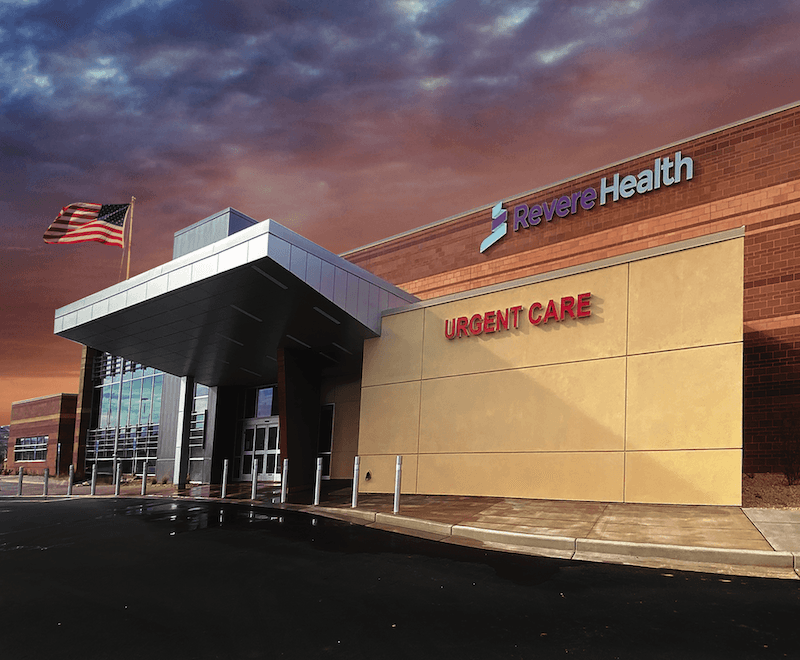Comprehending the Function of Urgent Treatment in Giving Timely Treatment for Non-Life-Threatening Conditions
Immediate care facilities have arised as an important component of the health care landscape, addressing the instant requirements of patients with non-life-threatening conditions. Understanding the subtleties of immediate treatment could considerably influence individual results and the total effectiveness of medical care distribution.
What Is Urgent Care?
Immediate treatment describes a classification of clinical solutions made to deal with non-life-threatening problems that call for prompt focus. These centers act as an intermediary in between health care medical professionals and emergency clinic, offering a practical option for people that need timely treatment without the considerable waiting times usually associated with emergency situation divisions.
Urgent care facilities are normally staffed by doctor, consisting of physicians, registered nurse practitioners, and physician aides, that are trained to identify and treat a broad variety of conditions. Usual services given by these facilities include therapy for minor injuries, health problems, and infections, in addition to diagnostic tests such as X-rays and lab work.
The access of immediate care is an essential consider its charm, as numerous centers run beyond normal office hours, including weekend breaks and evenings. This extended schedule permits clients to obtain timely care when their health care supplier may not come. In addition, urgent treatment facilities commonly approve walk-in clients, removing the need for appointments. In general, immediate care plays a vital duty in the medical care system, guaranteeing people can access essential medical solutions immediately and successfully.

Several individuals may discover themselves unclear regarding when to look for treatment at an urgent care center rather than a main treatment medical professional or an emergency clinic. Urgent care is created to attend to non-life-threatening problems that need punctual focus yet are not extreme adequate to warrant an emergency clinic go to.
Normally, one ought to take into consideration urgent look after concerns such as minor fractures, strains, cuts needing stitches, or infections like urinary tract infections. In addition, cool or influenza signs and symptoms, rashes, and sensitive responses can additionally be appropriately handled in this setup.
It is very important to keep in mind that immediate treatment is not ideal for serious emergency situations, such as breast pain, difficulty breathing, or serious blood loss, which necessitate prompt emergency room treatment.
People that lack accessibility to a health care doctor or can not protect a timely appointment may likewise benefit from urgent treatment services. Eventually, recognizing when to make use of immediate care can lead to more reliable healthcare distribution, permitting individuals to get the suitable degree of treatment based on their specific wellness demands.
Benefits of Urgent Treatment Centers
Choosing immediate treatment facilities for non-life-threatening conditions provides numerous advantages that enhance individual experience and ease of access. One key advantage is the minimized wait times compared to conventional emergency rooms. Immediate treatment centers usually operate a first-come, first-served basis, enabling people to obtain timely medical attention without the lengthy hold-ups typically related to hospital setups.
In addition, our website immediate care centers provide extended hours, including weekend breaks and evenings, fitting patients with varying timetables. This adaptability guarantees that people can look for care when it is most convenient for them, additionally advertising prompt treatment.

Additionally, these centers frequently offer a thorough variety of solutions, including minor procedures and diagnostic tests, all under one roof covering. This consolidation of solutions not only simplifies the person experience but likewise fosters a more natural strategy to handling non-life-threatening health and wellness issues, inevitably benefiting total person outcomes.
Usual Problems Treated
At urgent care centers, a variety of non-life-threatening problems can be efficiently treated, supplying people with available and timely clinical support. These centers are particularly experienced at dealing with concerns that call for prompt focus yet do not position an instant risk to life or arm or leg.
Common conditions dealt with at immediate treatment centers consist of minor injuries such as sprains, strains, and cracks. Immediate care facilities are outfitted to perform necessary diagnostic examinations, such as X-rays and research laboratory tests, enabling them to offer extensive care.
Additionally, urgent care service providers can provide inoculations, assisting to stop the spread of infectious conditions - Urgent Care. They additionally use services for minor treatments, such as suturing injuries or draining abscesses. By offering these varied services, urgent treatment facilities play a vital duty in linking the space between health care and emergency solutions, ensuring clients receive prompt treatment for a large range of conditions without the need for long delay times usually associated with emergency clinic
How Urgent Care Sustains Health Care System
Urgent treatment facilities play a critical function in sustaining the total healthcare system by relieving the problem on emergency departments and giving timely accessibility to treatment for non-life-threatening problems. By dealing with instances such as minor injuries, infections, and ailments, urgent treatment facilities enable emergency divisions to concentrate on more critical individuals requiring immediate attention.
In addition, urgent care facilities boost healthcare accessibility, using extensive hours More Help and an easier choice to standard primary care setups. This ease of access is especially beneficial for clients that might not have a regular doctor or that call for immediate treatment outside of normal workplace hours. Because of this, urgent care facilities properly reduce wait times and improve individual satisfaction.
Additionally, urgent care facilities contribute to cost savings for both individuals and the medical care system by supplying lower-cost solutions contrasted to emergency situation divisions. This economic performance is essential in a period of rising health care expenses, permitting individuals to obtain essential click now treatment without incurring exorbitant expenses.
Conclusion
To conclude, immediate treatment facilities play an essential function in the health care system by providing prompt treatment for non-life-threatening problems. By linking the void between medical care and emergency rooms, these centers make certain that people get timely medical focus without the extensive delay times usually connected with emergency divisions. The access and effectiveness of urgent care facilities contribute considerably to alleviating the total problem on health care resources, boosting individual results, and advertising a much more effective medical care shipment system.
Urgent care facilities have actually emerged as a vital part of the health care landscape, addressing the instant requirements of clients with non-life-threatening problems. Urgent treatment check outs generally sustain reduced out-of-pocket costs contrasted to emergency situation division sees, making care a lot more budget friendly for individuals without compromising high quality. Immediate care facilities are equipped to do necessary diagnostic examinations, such as X-rays and laboratory examinations, allowing them to give extensive treatment.
By using these diverse solutions, urgent treatment facilities play an important function in bridging the gap between primary care and emergency situation services, making sure patients receive timely therapy for a large range of conditions without the requirement for lengthy delay times generally linked with emergency rooms.
Moreover, urgent care facilities improve medical care accessibility, providing extended hours and a much more practical choice to traditional primary care settings.